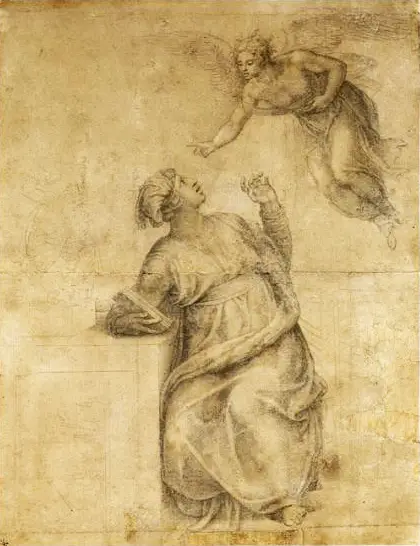The initial example found here is owned by the Morgan Library and Museum in New York. Venusti used this very same piece as a study for his own painting which can be found at the Galleria Nazionale d'Arte Antica in Rome. The most famous depiction of this theme remains by Leonardo da Vinci who gifted us the stunning Annunciation around 1472-75.
Artist Michelangelo produced drawings for two main purposes, to study technique for later frescos or sculptures, or to give gifts to friends. The Cartonetto featured lower down this page is believed to have been given to Duke Cosimo de' Medici. Such favours would help to bring strong political and financial backing to Michelangelo and help him to receive major commissions across his career.
The artist would build a working relationship with Marcello Venusti, providing drawings such as these for the younger colleague to turn into impressive frescos. Michelangelo would initially give him some relatively simple requests before being thoroughly impressed and complementary about his work and thus decided to greatily expand the quantity and significance of the projects he requested.
Several items of documentation have proven that Michelangelo would then have paid his colleague around seven or eight scudi per artwork. The two drawings displayed in this page have clearly been taken beyond the stage of study pieces, with precise detail on the figures involved and some background detail added.
The Annunciation was captured by many artists from the Renaissance and it is intriguing to see how each artist would incorporate their own technical ideas and artistic license. Some of the highest profile paintings from and around this period included those by the likes of Caravaggio, Hieronymus Bosch, Jan van Eyck and Raphael.



